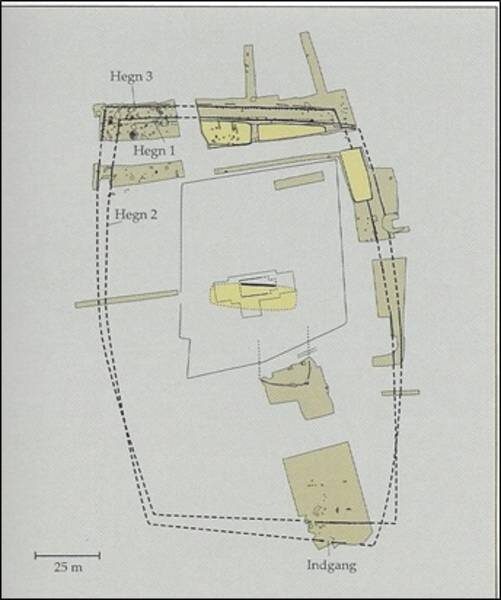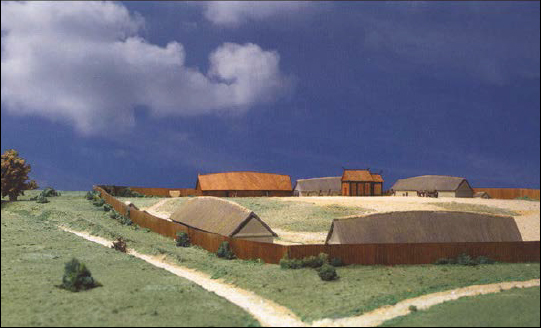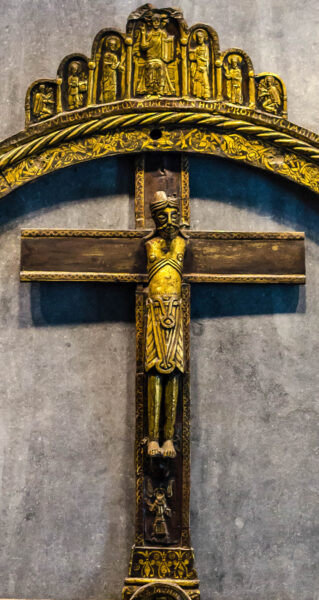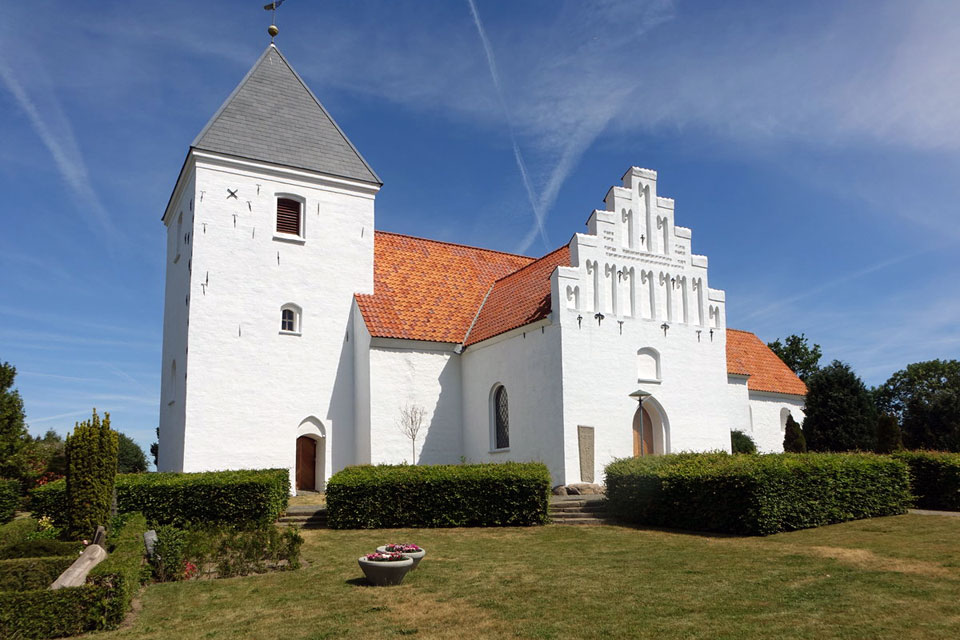The church in Lisbjerg is considered the oldest in the Lisbjerg Hundred and dates to c. AD 1100 – 1150. However, a predecessor in the form of a wooden stave church was built as part of a fenced manor c. 1000 – 1100.

Lisbjerg Church near Århus in Denmark represents an opportunity to follow the transition from a Pagan to a Christian world c. 1000. In 1989 – 1994, and again in 2002, archaeologists had the opportunity to excavate around and beneath Lisbjerg church, one of the oldest stone churches in the region of Århus in Eastern Jutland (Denmark). Even though a full excavation was hampered by the churchyard, an impressive history of the transition from Pagan to Christian times c. AD 1000 has been revealed.
At the earliest level, the archaeologists found a fenced site holding at least four buildings, part of a magnate’s farm. Three of these buildings were constructed with slightly curved walls, characteristic of the so-called Trelleborg Houses from the very late 10th century. The farm measured 170 x 100 meters with a somewhat curved fence to the east and west. The fenced area covered c. 2 ha. To the south, a three-meter wide gate was found. Inside this fence, the archaeologists also found remains of some pit houses with traces of textile production, some leftovers from bronze- and silver-casting, as well as a smith’s workshop. Other finds consisted of imported glass, amber, and garnets. Ceramics were from the 10th century. Later excavations have supplemented these finds by uncovering 22 pit houses in the village proper. At the centre of the manor (beneath the present church) the remains of what is believed to have been the main hall were uncovered. This building had been separately ditched and fenced. With a depth of one metre, the planks were robust, c. 30 – 40 cm wide and 7 cm thick.
The manor complex, perhaps called Skejgaard, was located on a hill, next to the main village in the hundred. Reaching down to the small river, Egå, the farm was strategically located to the east of the old highway running north from Århus. Just north of the river, a two km long moat had been dug protecting the southern border of the hundred near the ford and directing and supervising traffic from the river crossing onto the road, which passed through the village. Connected with the complex may also have been one or more watermills, known from a later period. A similar mill further up the river has been dendrochronologically dated to c. 1100.

When the first excavations were carried out, the archaeologists suggested the building beneath the church had been the main hall of the complex. Unfortunately, the findings were sparse. Not much is known of this building apart from the fact that it had been constructed using extraordinarily heavy posts (40 x 15 cm) and planks. The question was raised, though, whether the central building was, in fact, less a central living hall, and more of a religious “temple”? Or whether a smaller building connected with the hall might have played this role. Such a conclusion has now been reached about similar compounds at Tissø, Uppåkra, and the recently discovered site at Fæsted. When the excavations were carried out at Lisbjerg, though, the exact understanding of the buildings found at Tissø and Uppåkra had not been reached.
Two Churches

What we know is, that at some time during the 11th century, a stave-church was built beneath the present stone church. The primary evidence consisted of six post-holes. Filled with lime plaster – all painted in either red or yellow ochre – it seems as if the timber was dug up and reused elsewhere. Afterwards the holes were filled in with the debris. No details of the decoration were found, apart from some painted lines of red on yellow. A few of the burials inside the church appear to be from this period. This building measured c. 6 x 8 meter. Later, in the beginning of the 12th century, the present stone church was erected. Built of lime, local travertine and granite, it was perhaps built around 1135, when the famous Lisbjerg Altar according to dendrochronology dates from. The large crucifix in the centre of the altar, however, is believed to be half a century older and may have been part of the original decoration of the first stave church
Written evidence shows that Lisbjerg in the Later Middle Ages belonged to the diocese of Århus. It has been suggested that the manor complex at Lisbjerg during the Viking Age functioned as a royal administrative centre. The lord of the manor would have been in charge of organise the local defence, perhaps taxing travellers crossing the river at the ford as well as exploiting the watermills along the river. Attached to this manor farm was a series of highly skilled craftsmen and – likely – a cultic centre. Perhaps, in 1060, when Århus was turned into a bishopry, the manor farm was donated by the king. At this point, the first church was built. Although constructed as a stave-church it was plastered, decorated, and perhaps embellished with the impressive golden crucifix. A late 17th century source tells us that when the episcopal residence was complete in Århus in 1102, the bishop moved from Lisbjerg to Århus. Perhaps the manor was demolished at this point, while the new stone church was built, based on the design of the new and impressive cathedral inside Århus.
SOURCES:
Stormandsgården ved Lisbjerg kirke – Nye undersøgelser
By Jens Jeppesen
I: KUML 2002
Trækirke of Stormandshal i Lisbjerg
By Jens Jeppesen and H. J. Madsen
I: KUML 1995 – 96, p. 149 – 169
Stormandsgaard og Kirke i Lisbjerg
Jens Jeppesen and Hans Jørgen Madsen
I: KUML 1988, pp. 289 – 309
